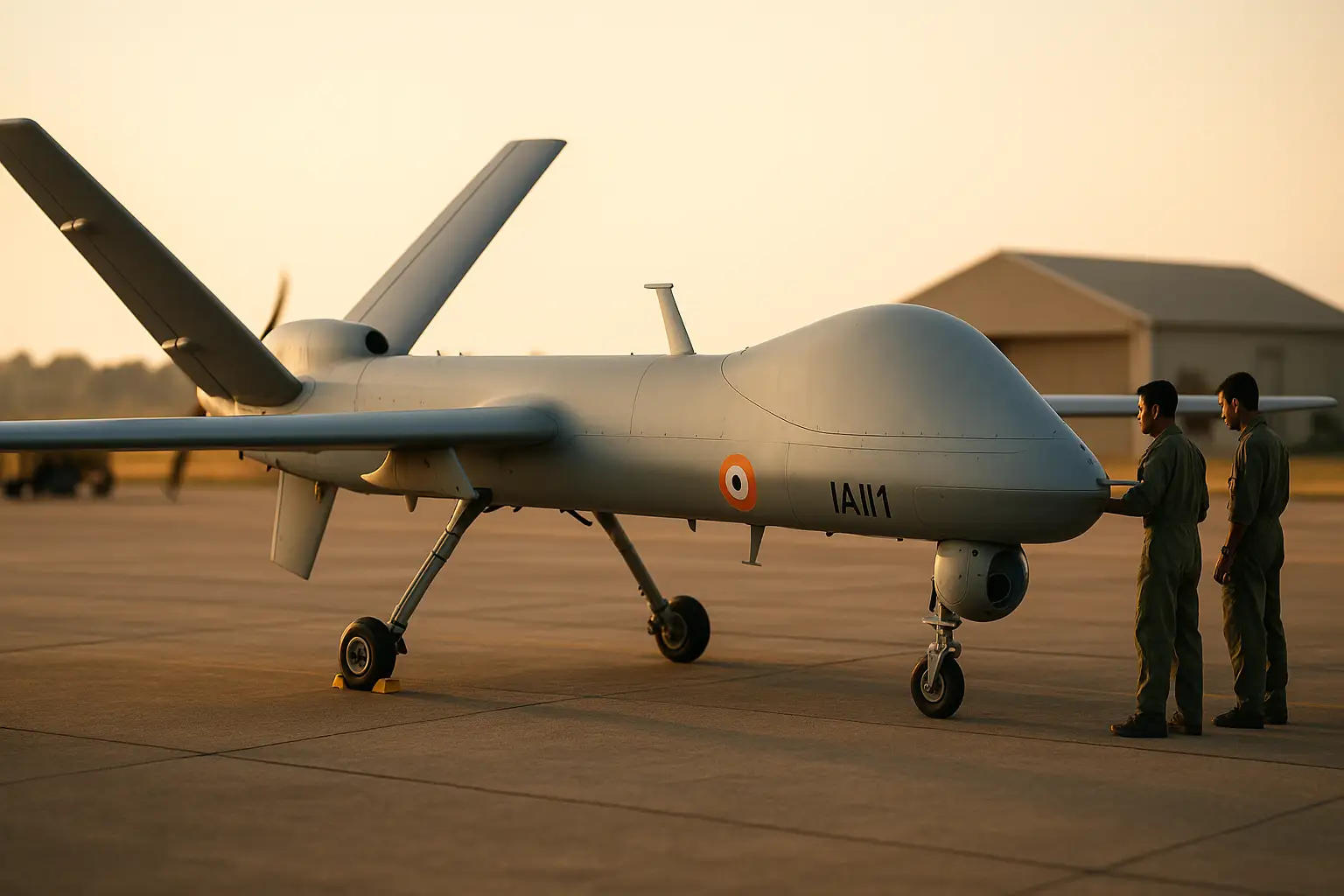Back in 2020, when India leased MQ-9B drones from the United States, it felt like progress but also dependence. We were borrowing eyes to watch our skies, and that never truly sat right with me.
Fast forward to 2025, and the picture has changed dramatically. The accelerated procurement of 87 MALE UAVs is not just another defence contract; it is a declaration that we are done renting power and ready to build it at home.
As someone who has closely followed India’s defence evolution, this moment feels like a turning point. We are no longer playing catch-up. With these indigenous, AI-enabled drones, our forces will see first, think faster, and strike without hesitation. And now, with a dual-production strategy approved on 12 August 2025, we are ensuring these UAVs are built faster, smarter, and entirely on our terms.
What Is a MALE UAV and Why It’s Critical Now
Unpacking the Tech: MALE Drones
A MALE UAV, short for Medium Altitude Long Endurance Unmanned Aerial Vehicle, can fly at altitudes between 10,000 and 35,000 feet for over 30 hours without human pilots. These machines are the backbone of ISR drone systems, designed to collect intelligence, surveillance, and reconnaissance data in real-time.
Unlike manned fighters or satellites, MALE drones can loiter silently above conflict zones, monitor borders for hours, and even engage targets using precision munitions.
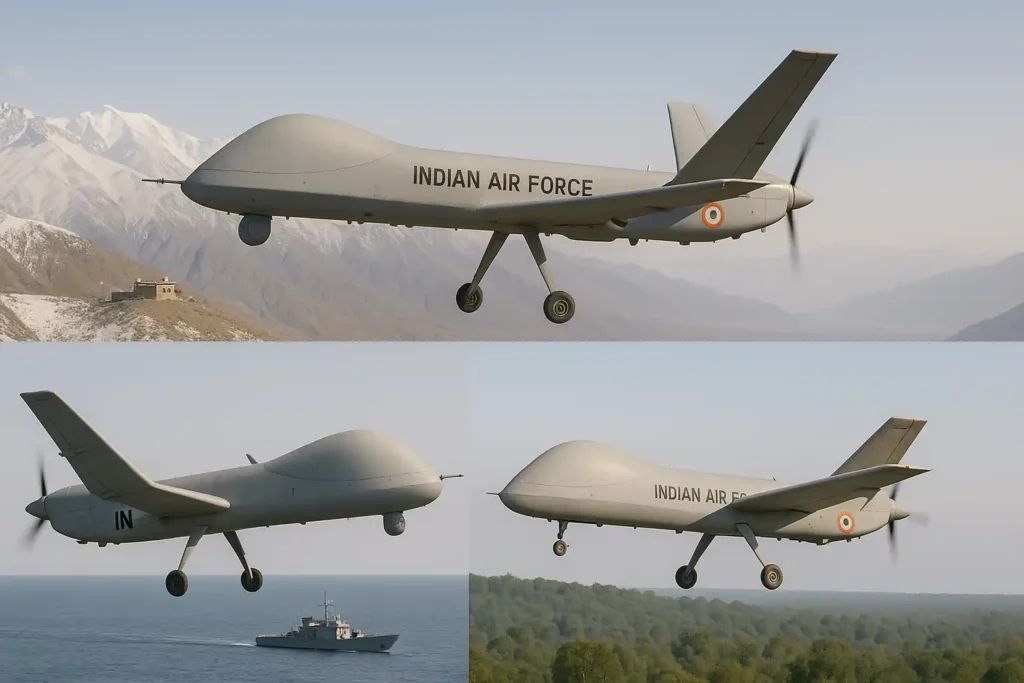
Why India Needs 87 of Them, Now
With the Chinese military expanding surveillance and logistics infrastructure along the LAC, and Pakistan continuing its infiltration attempts across the LoC, India must maintain round-the-clock monitoring. Add to that the strategic turbulence in the Indian Ocean, and the need for UAV surveillance for Indian Navy operations becomes even more pressing.
Thus, these 87 MALE UAVs will serve as India’s silent sentinels across our entire strategic spectrum—from high-altitude UAV operations in Ladakh to Indian Ocean drone monitoring in the maritime theatre.
Indigenous MALE Drone Development: India’s Self-Reliant Path
Perhaps the most exciting aspect of this project is that the majority of the drones, at least 60%, will be manufactured in India under the IDDM (Indigenously Designed, Developed, and Manufactured) category.
This is more than a nod to the Make in India UAV programme. It’s a full-throttle move to transform India into a global drone manufacturing hub.
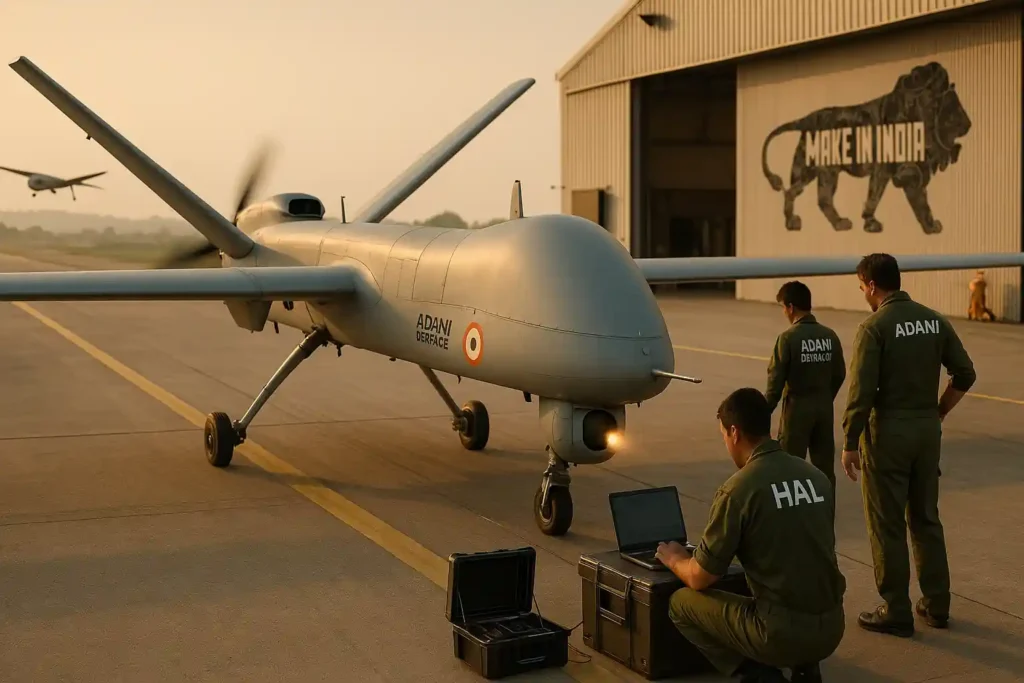
The Indian Defence Ecosystem Steps In
The following Indian defence majors and tech innovators are leading the charge in indigenous MALE drone development:
- Adani Defence (Hermes-900 adaptation)
- SolarADL (known for its UAV payload systems)
- HAL (veterans in aerospace platforms)
- Tata Advanced Systems
- L&T Defence
- Raphe mPhibr (focusing on AI-powered drone payloads and propulsion tech)
Together, they represent the new age of Indian drone manufacturers, ensuring the country doesn’t just operate MALE drones, but builds, tests, weaponises, and evolves them in-house.
Dual Production for India’s MALE UAVs
What really stands out to me in this ₹30,000 crore MALE UAV programme, approved on 12th August 2025, is the way the Defence Acquisition Council (DAC) has chosen to approach production. Rather than placing all the responsibility on a single manufacturer, the order for 87 drones will be shared between two Indian defence partners in a 64:36 ratio.
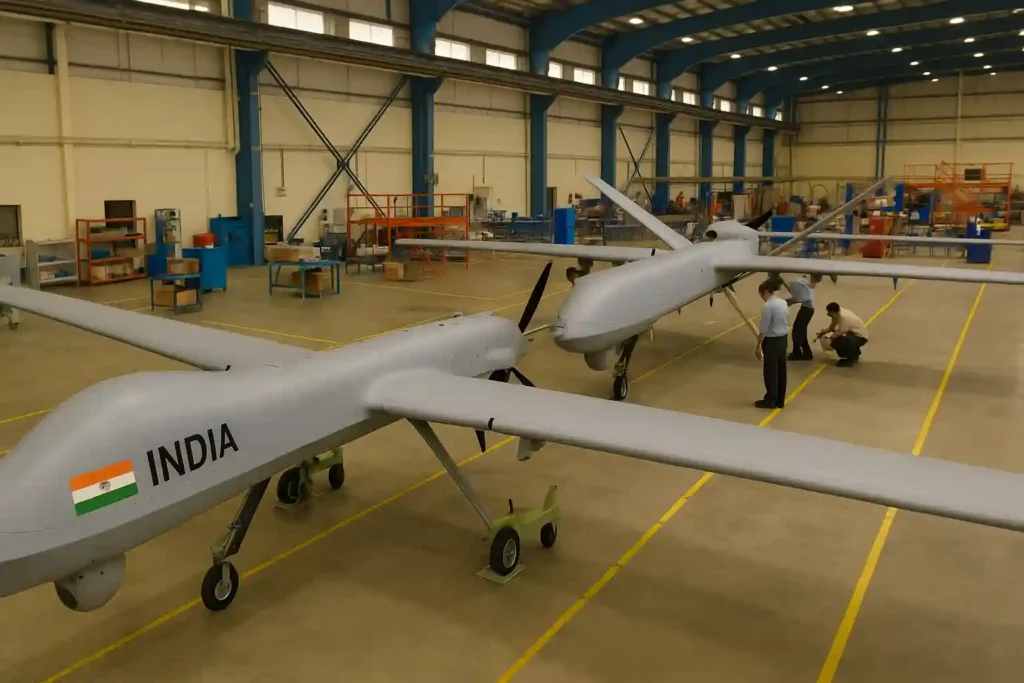
To me, this is a smart, forward-looking move. It is not just about splitting numbers; it is about creating strength in depth. By having each company establish its manufacturing facility in India, we are building two parallel production lines that can work at full pace, minimise delays, and deliver consistently to our forces.
This approach offers more than just speed:
- It sparks healthy competition, ensuring both partners deliver their best.
- It spreads skills, technology, and jobs across multiple defence hubs, strengthening our UAV ecosystem.
- It builds excess capacity that can later be used to fulfil export orders, turning India into a drone supplier, not just a consumer.
For me, this is Make in India at its most purposeful. We are not only manufacturing drones; we are laying the foundation for a long-term, self-reliant defence industry that will stand on its own, even in times of global supply disruptions. This is how you build sovereignty, one production line, one skilled worker, and one UAV at a time.
₹30,000 Crore Investment: What’s Included?
The total project cost is estimated at ₹30,000 crore, and it’s not limited to just buying airframes.
What India Will Receive:
- Ground control stations for all-weather operations
- Secure SATCOM systems for real-time control and targeting
- Electro-optical/Infrared sensors and Synthetic Aperture Radar (SAR)
- AI-powered mission control systems
- Integration of loitering munitions, anti-tank guided missiles, and jamming pods
This demonstrates the government’s clear intention to transition toward combat-ready MALE UAVs, drones that can both observe and act.
Weaponised Drones for Indian Army & Tri-Service Use
One of the most impactful shifts in doctrine is the transition from passive ISR drones to weaponised drones for the Indian Army and other services.
Why Weaponisation Matters
Modern battlefield dynamics demand rapid response and precision strikes. These MALE UAVs will be armed to:
- Neutralise enemy bunkers
- Destroy armoured targets
- Suppress enemy radars
- Launch pre-emptive strikes in border skirmishes
Having MALE drone combat capabilities gives commanders options to act without risking pilot lives—and at a much lower operational cost than manned fighters.
Deployment Strategy: Border Surveillance UAVs and Maritime Prowess
The 87 UAVs will be strategically distributed across the Indian Army, Navy, and Air Force. Here’s how each service will use them:
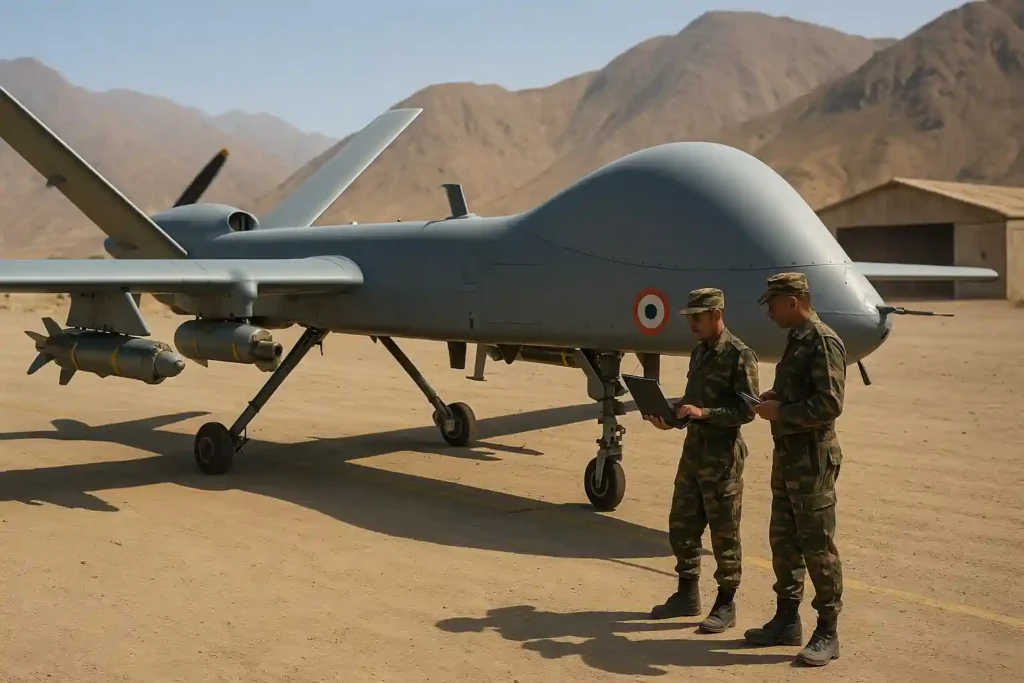
Indian Army
- Border surveillance UAVs along the LoC and LAC
- Tracking infiltration in real-time
- Live feed to battalion-level commanders
Indian Air Force
- Deep reconnaissance missions
- Supporting fighters in contested airspace
- Drone warfare strategy integrated into Theatre Commands
Indian Navy
- Continuous UAV surveillance for Indian Navy vessels
- Monitoring strategic sea lanes and enemy naval assets
- Enhancing maritime domain awareness in Indian Ocean drone monitoring
This layered usage ensures seamless national security across terrain, sea, and air.
From Imports to Intelligence Control: A Strategic Shift
Until now, India has relied on:
- Israeli Heron and Searcher drones
- Leased MQ-9B SeaGuardians from the US
These were effective, but:
- Costly
- Limited in operational customisation
- Bound by foreign upgrade timelines
- Exposed to supply chain vulnerabilities during conflict
By choosing indigenous MALE drone development, India takes full control over drone design, sensor integration, upgrades, and weaponisation, building strategic sovereignty.
When Will These Drones Arrive?
The proposal is already in the final review stage at the Ministry of Defence. Based on current estimates:
- Approval by late 2025
- Prototype testing in 2026
- Initial delivery from 2027
- Full operational induction by 2029
By 2030, these UAVs will form the backbone of India’s unmanned surveillance and strike doctrine.
My Perspective: India’s Drone Moment Is Finally Here
As someone deeply invested in India’s defence narrative, I believe this acquisition of 87 MALE UAVs is our real entry into drone warfare strategy. It marks the point where India stops buying for the short term and starts building for the future.
We’re not just buying drones, we’re buying time, intelligence, and tactical superiority.
When we talk about combat-ready MALE UAVs with AI-powered drone payloads, we’re talking about future-proofing our forces. It’s about dominating data, not just terrain.
